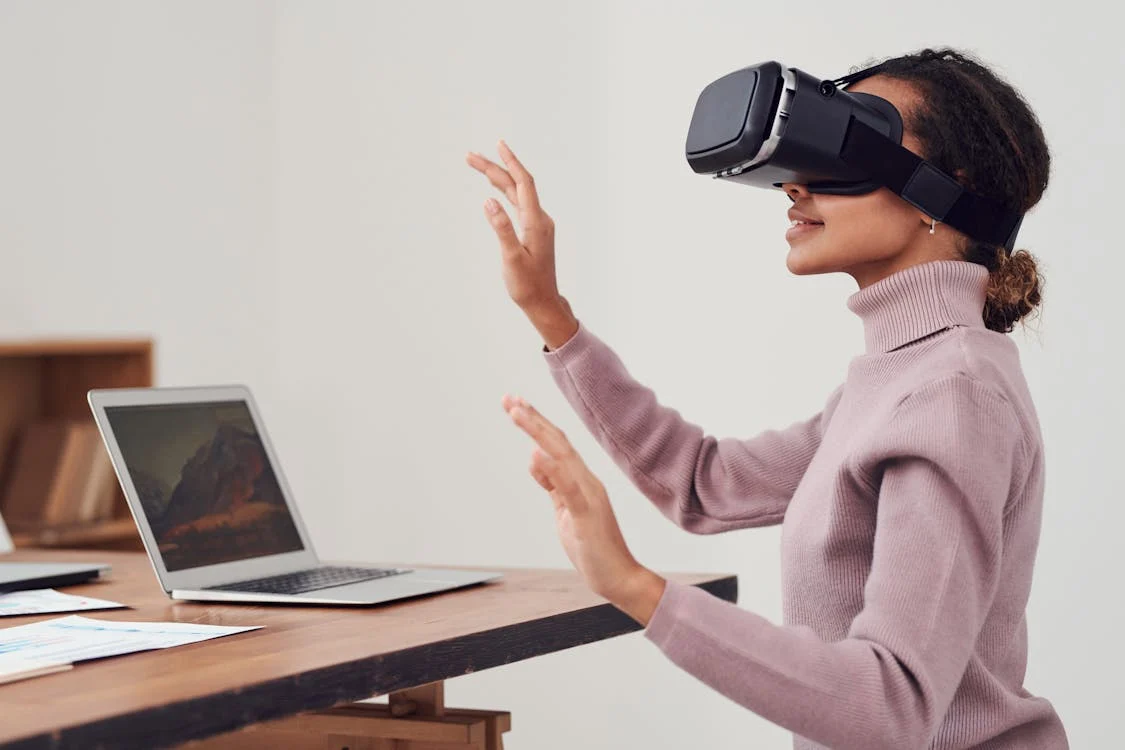The future of technology is here, and it’s being shaped by the incredible advancements in Augmented Reality (AR) and Virtual Reality (VR). Our AR VR Showcase brings these cutting-edge technologies to the forefront, offering a glimpse into the endless possibilities they hold. In this article, we delve into the professional and trending information about AR and VR, exploring their current applications, future potential, and impact on various industries.

Understanding AR and VR
Augmented Reality (AR) overlays digital information onto the real world, enhancing the user’s perception and interaction with their environment. Virtual Reality (VR), on the other hand, immerses users in a completely virtual environment, disconnecting them from the real world and transporting them to an entirely new realm. Both technologies are revolutionizing the way we interact with digital content.
Current Applications of AR and VR
AR and VR are no longer confined to the realms of science fiction or gaming. They have found practical applications across various industries, providing innovative solutions and transforming traditional processes.
Healthcare
In healthcare, AR and VR are being used for surgical simulations, medical training, and patient treatment. Surgeons can practice complex procedures in a virtual environment, reducing the risk of errors during actual operations. AR can assist in diagnosing conditions by overlaying patient data onto the real-world view, providing doctors with a more comprehensive understanding of the patient’s health.
Education
Education is another field where AR and VR are making a significant impact. These technologies enable immersive learning experiences, allowing students to explore historical sites, conduct virtual science experiments, and engage with interactive 3D models. This hands-on approach enhances comprehension and retention of knowledge.
Retail
The retail industry is leveraging AR to enhance customer experiences. Virtual fitting rooms allow shoppers to try on clothes and accessories without physically being present in the store. VR can create immersive shopping environments, enabling customers to browse and purchase products in a virtual store.
Future Potential of AR and VR
The future of AR and VR is incredibly promising, with ongoing advancements set to unlock even more possibilities.
Enhanced User Interfaces
Future developments in AR and VR will lead to more intuitive and seamless user interfaces. Gesture recognition, eye-tracking, and voice commands will become more sophisticated, providing users with a more natural and immersive experience.
Improved Hardware
As hardware continues to evolve, AR and VR devices will become lighter, more comfortable, and more affordable. The development of standalone VR headsets, such as the Oculus Quest, has already made VR more accessible to the general public. Future iterations will likely feature higher resolution displays, wider fields of view, and longer battery life.
5G Integration
The integration of 5G technology will play a crucial role in the advancement of AR and VR. With faster and more reliable internet connections, these technologies will be able to deliver high-quality, real-time experiences with minimal latency. This will be particularly beneficial for applications like remote collaboration and telemedicine.
Impact on Various Industries
AR and VR are set to disrupt numerous industries, providing innovative solutions and creating new opportunities.
Manufacturing and Engineering
In manufacturing and engineering, AR and VR can streamline design and prototyping processes. Engineers can visualize and manipulate 3D models in a virtual environment, making it easier to identify potential issues and optimize designs. AR can assist technicians in assembling complex machinery by overlaying instructions and guidelines onto the real-world view.
Entertainment and Media
The entertainment and media industries are already embracing AR and VR to create immersive experiences for audiences. VR concerts and virtual theme parks offer new ways for people to enjoy entertainment. AR can enhance live events by providing real-time information and interactive elements.
Real Estate
Real estate is another industry benefiting from AR and VR. Virtual property tours allow potential buyers to explore homes without physically visiting them. AR can overlay information about a property’s features and history, providing a richer and more informative viewing experience.
Conclusion
The AR VR Showcase highlights the transformative potential of augmented and virtual reality. As these technologies continue to advance, they will unlock new possibilities and reshape various industries. From healthcare and education to retail and entertainment, AR and VR are driving innovation and creating immersive experiences that were once unimaginable. Embracing these technologies will be key to staying ahead in the rapidly evolving digital landscape.
FAQs
1. What is the main difference between AR and VR?
AR overlays digital information onto the real world, enhancing the user’s perception of their environment. VR, on the other hand, immerses users in a completely virtual environment, disconnecting them from the real world.
2. How are AR and VR used in healthcare?
AR and VR are used for surgical simulations, medical training, and patient treatment. They help reduce the risk of errors during surgeries and provide comprehensive diagnostic information by overlaying patient data onto real-world views.
3. Can AR and VR be used for remote work and collaboration?
Yes, AR and VR can facilitate remote work and collaboration by creating virtual meeting spaces and interactive environments where team members can interact and collaborate in real-time, regardless of their physical location.
4. What role will 5G play in the future of AR and VR?
5G will provide faster and more reliable internet connections, enabling high-quality, real-time AR and VR experiences with minimal latency. This will enhance applications like remote collaboration, telemedicine, and immersive gaming.
5. Are AR and VR devices expensive?
The cost of AR and VR devices varies, but advancements in technology are making them more affordable. Standalone VR headsets like the Oculus Quest have become more accessible to the general public, and future developments are expected to further reduce costs.